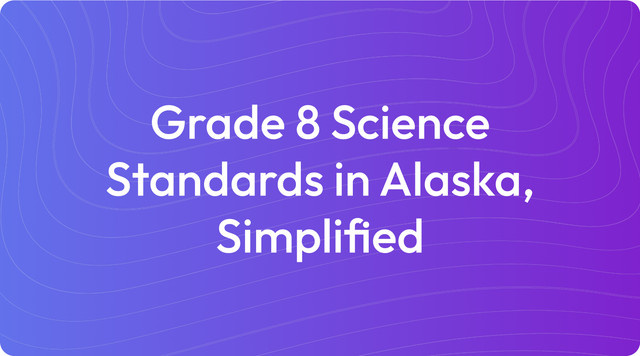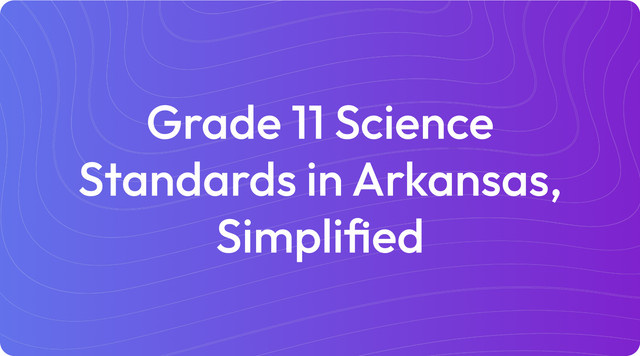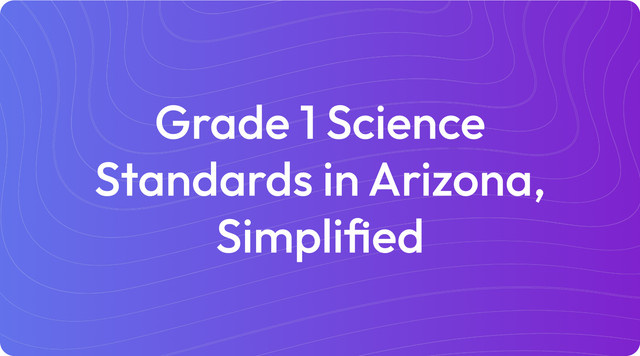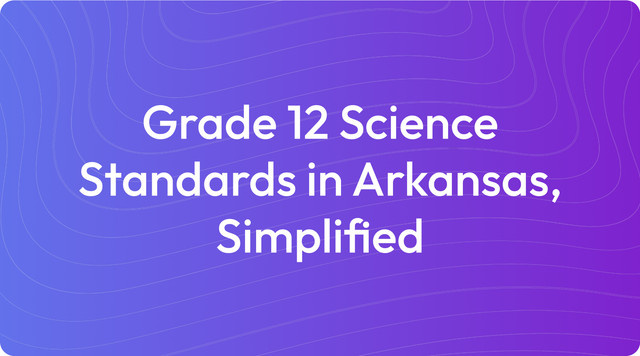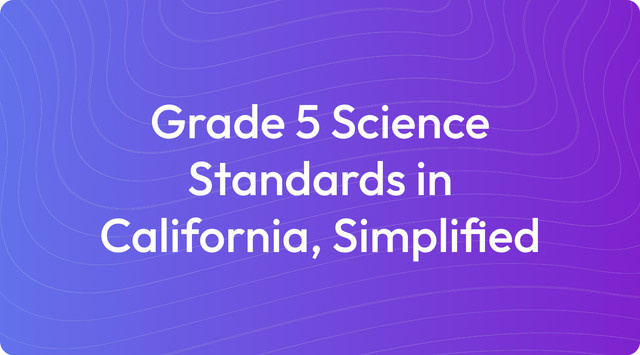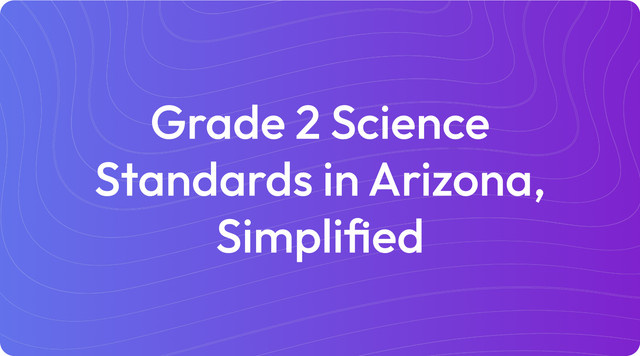Grade 3 Science Standards in Arkansas, Simplified
Grade 3 science in Arkansas explores forces, life cycles, and weather. Discover easy-to-read standards—read more on TeachShare!
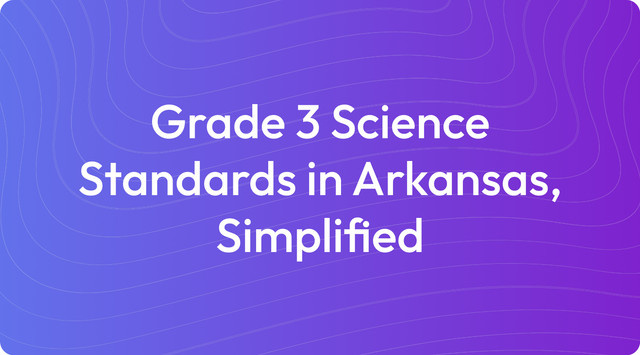
We know that working with state standards can be a complex part of your job. At Teachshare, our goal is to provide tools that help you align your teaching materials with these requirements, saving you time and effort. Understanding the structure of these standards is a helpful first step.
Education standards are learning goals that outline what students are expected to learn in each subject by the end of a grade level. For teachers, they provide a clear framework for instruction without dictating specific teaching methods or curriculum. For instance, Arkansas's third-grade science standards require students to investigate how forces affect motion, but leave it to you to decide how to design that investigation.
What Are Grade 3 Science Standards in Arkansas?
The Grade 3 Science Standards in Arkansas cover three domains: Physical Science (PS), Life Science (LS), and Earth and Space Science (ESS). These standards emphasize three-dimensional learning and follow the Arkansas K-12 Science Standards. Here’s an overview of the specific objectives:
Physical Science (PS)
- 3-PS2-1: Investigate how forces (pushes and pulls) affect an object's motion
- 3-PS2-2: Observe how objects move when forces act on them
- 3-PS2-3: Identify cause and effect with magnets and forces
- 3-PS2-4: Define how magnets interact at a distance and affect objects
Life Science (LS)
- 3-LS1-1: Explore how plants and animals go through life cycles
- 3-LS2-1: Investigate animal group behaviors and how they help survival
- 3-LS3-1: Describe how traits are inherited from parents or influenced by the environment
- 3-LS4-1: Use evidence to explain how organisms adapt to survive in their environment
Earth and Space Science (ESS)
- 3-ESS2-1: Represent weather patterns and climate in different regions
- 3-ESS2-2: Obtain and interpret data on weather and climate
- 3-ESS3-1: Identify solutions to reduce weather-related hazards
The framework for these standards is guided by the Arkansas K-12 Science Standards, which align with the Next Generation Science Standards.
Key Tested Standards
For Grade 3 Science in Arkansas, assessments often focus on the standards that build foundational concepts and skills. While specific tests can vary, you can expect questions to center on the following key areas:
Physical Science (PS)
- 3-PS2-1: Investigate how forces (pushes and pulls) affect motion
- 3-PS2-3: Determine cause and effect relationships with magnets and forces
Life Science (LS)
- 3-LS1-1: Describe life cycles of plants and animals
- 3-LS3-1: Explain how traits are inherited or influenced by the environment
- 3-LS4-1: Provide evidence about how organisms adapt to survive
Earth and Space Science (ESS)
- 3-ESS2-1: Represent and interpret weather patterns and climate
- 3-ESS3-1: Identify and communicate ways to reduce weather-related hazards
These standards emphasize investigation, data interpretation, and connecting science to real-world scenarios, making them likely candidates for assessment.
This information is based on guidance from the Next Generation Science Standards and the Arkansas Division of Elementary and Secondary Education.
Example Learning Objectives for Unit Planning
Learning objectives are clear, student-friendly statements that describe what students will be able to do by the end of a lesson. They break down broader standards into specific, measurable goals for your daily instruction, making it easier to plan and assess student progress. Here are a few examples to help with your unit planning:
Standard: 3-PS2-1 (Investigate how forces affect motion)
- I can describe how a push or pull can change the way an object moves.
- I can investigate how the strength of a force affects an object’s motion.
- I can explain how forces like friction can slow objects down or stop them.
Standard: 3-LS1-1 (Describe life cycles of plants and animals)
- I can describe the stages of a plant’s life cycle, from seed to adult plant.
- I can explain how animals grow and change throughout their life cycle.
- I can compare the life cycles of a plant and an animal to find similarities and differences.
Key Changes & Updates
The Arkansas K-12 Science Standards were updated in 2015 to align with the Next Generation Science Standards (NGSS). This shift was designed to make science education more rigorous and hands-on, connecting classroom learning to real-world applications. For you, this means a greater focus on helping students think and act like scientists and engineers. Here are the most significant changes for Grade 3 Science:
- Three-Dimensional Learning: An approach that integrates Science and Engineering Practices (the skills), Crosscutting Concepts (big ideas like cause and effect), and Disciplinary Core Ideas (the content).
- Focus on Phenomena: Instruction is anchored in real-world problems and observable events, encouraging students to ask questions and seek explanations.
- Engineering Integration: Students are asked to design solutions to problems, such as finding ways to reduce weather-related hazards as outlined in standard 3-ESS3-1.
- Performance Expectations: The emphasis is on what students can do with their knowledge, requiring them to demonstrate understanding through investigations and constructing explanations rather than just recalling facts.
Create with TeachShare
We understand that aligning your lessons with state standards like those in Arkansas can be demanding. Our platform is designed to lighten that load, helping you build engaging, standards-aligned materials without the extra hours. We handle the framework so you can focus on what you do best: teaching. Start creating standards-aligned instructional resources with TeachShare now.
Frequently Asked Questions
To help you better understand the standards, here are answers to some common questions:
1. How are students assessed beyond traditional tests?
Assessment is focused on what students can do. Instead of relying only on memorization, the standards encourage performance-based tasks. This means students might conduct an experiment, design a model to solve a problem, or explain their reasoning, showing a more complete understanding of the material.
2. What does “three-dimensional learning” mean for a third-grade classroom?
It’s an approach that weaves together three key elements: core science ideas, scientific practices like investigating, and connecting concepts like cause and effect. This is important because it helps students learn to think like scientists and apply their knowledge to solve real problems, rather than just learning isolated facts.
3. How do these standards help students develop practical, real-world skills?
They directly connect classroom learning to everyday life. Students gain useful skills like critical thinking, collaboration, and problem-solving. For example, they might explore how plants adapt to their environment or design a solution to reduce the impact of a weather hazard, making science tangible and relevant.
4. What are the key science topics covered in third grade?
The curriculum is organized into three core areas. Students will study Physical Science, focusing on forces, motion, and magnetism; Life Science, which covers life cycles, traits, and adaptations; and Earth and Space Science, with a focus on weather patterns and climate.
5. How does this curriculum prepare students for future science classes?
It builds a solid foundation for their entire science education. By practicing skills like analyzing data, building models, and solving problems early on, students are better prepared for more advanced topics in later grades, such as in-depth studies of energy, ecosystems, and Earth systems.
Answer


